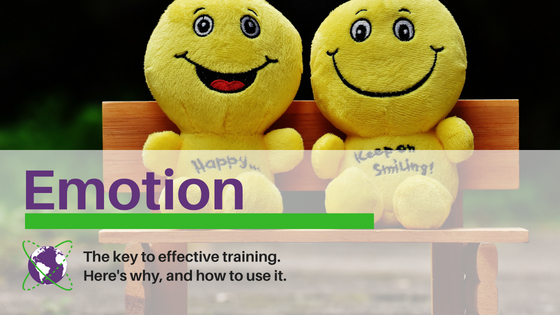If you were to reflect on the training you’ve done in your life, chances are you would realise a universal truth: We only learn new things once we are uncomfortable with existing circumstances.
And if I were to ask you to reflect on the best leaders you’ve ever had, chances are you’d also realise a universal truth: The greatest leaders are compassionate.
How are the two related? And why should you care?
As a CXO or board director, you will no doubt want your enterprise to be known as a mature organisation. Mature in technology, mature in its internal systems, mature in its approach to business.
You can’t be a mature enterprise unless all of your leaders are capable and confident in dealing with emotion. Only those that are mature are capable of delivering great training: It allows leadership to help employees find their discomfort, shift to a new space, and be supported through the transition.

Compassion is a key characteristic of good leadership.
In a new study published this month in the Harvard Business Review, Hougaard, Carter and Beck, each one a researcher or writer on leadership found that, of
“… more than 1,000 leaders from 800 organizations, 91% of them said compassion is very important for their leadership and 80% said they would like to enhance their compassion but do not know how.” (HBR)
When you are a compassionate leader, you are unafraid to uncover the emotional responses they and their team members have. Not just the surface responses, but the true emotional responses. The heartfelt, gut-felt emotions. It is ‘the intent to contribute to the happiness and well-being of others’. (HBR)
The difficult question is, then, if you ignore your team’s emotions, does that make you a poor leader? Not necessarily; compassion can be learned.
And yet, there are large numbers of organisations that are afraid to go there. You’ll hear leaders say things like emotion doesn’t have a part to play at work; or that people should just do their work and get on with it.
A leader who expresses himself or herself in this way is afraid of the emotional response. This fear is stopping them from contributing effectively to the happiness and wellbeing of others.

Why do many corporate leaders fear emotion?
In a leadership training session I ran this month, I wanted to know – so I asked.
What are you afraid of? I asked. What is it about an emotional interaction that makes you uncomfortable?
The responses were telling. The participants were worried that the emotion would ‘open a can of worms’. There was a sense that once you could see the problem, it might hard to deal with.
As a leader, if you can see a problem, you need to address it. Emotion makes this hard, because if you are faced by a crying or upset team member, you may find yourself confronted by an aspect of your own behaviour that isn’t working.
Similarly, if there is something getting in the way that you can’t resolve, because it’s part of a big-picture organisational issue, then knowing about the problem asks you whether you have the courage to do something about it. If you decide that you do, then you have to make the time. You have to be the creative thinker. You have to do your best to do something about it.
It’s easier, sometimes, not to ask. But if you are a good leader, aren’t you supposed to be compassionate?
Emotion plays a critical role in developing your team
As human beings, we constantly experience emotion. Some of our emotions are productive; some of our emotions are unproductive. But they are always in a state of flux, and they are always present.
Whether or not we recognise those emotions is something very different. Most people recognise their emotions only 15% of the time.

Emotion is critical to the success of your training program
As you’ll recall, we only learn new things once we are uncomfortable with existing circumstances. Sometimes you have to push people into that space, because ideally they will really want to learn!
To create the circumstances in which someone to really wants to learn, we need to keep reminding them about why they need to be doing something differently.
This starts ahead of any training session. It begins in conversations. It begins with the evidence that what you’re doing right now isn’t working effectively. It begins to make people uncomfortable with the existing way, so that they start looking for something new.
Then, during training, we need to lead people to feel differently about what they’re doing. This is why immersive training is so powerful. As Dr Fiona Kerr points out in this TEDx talk, ‘when someone’s telling a really good story, we are actually synchronising physically’.
The process of unlearning existing ways, learning new ways, and relearning how to do things, is really what training is about. And as Forbes writer Margie Worrell pointed out, this process of unlearning, learning and relearning, is how to stay current: ‘Like the painter who needs to prepare a surface, stripping the paint is 70% of the work while repainting is only 30%.’
After training has concluded, you need to support your teams’ new methods in a way that reinforces them.
For example: You could point out mistakes and tell people they’re ‘doing it wrong’; or, you could make them aware of an error and ask them ‘how would you fix this’. Errors become a natural realignment process, part of the shift to a new way of feeling-thinking-doing.
Being able to help your employees to change, knowing the emotions you create when you do it, is what creates ‘sticky’ learning. It’s much more powerful than the best training session in the world.
In our last article we talked about the need to embed the activity in an environment that is going to help retention. This is why. It’s part of creating the need and desire for change that the environment must be part of it.
We have been transforming companies like yours into mature organisations since we started.
To find out how you can move from success to maturity, call our experts today on 1300 662 907.




Leave A Comment